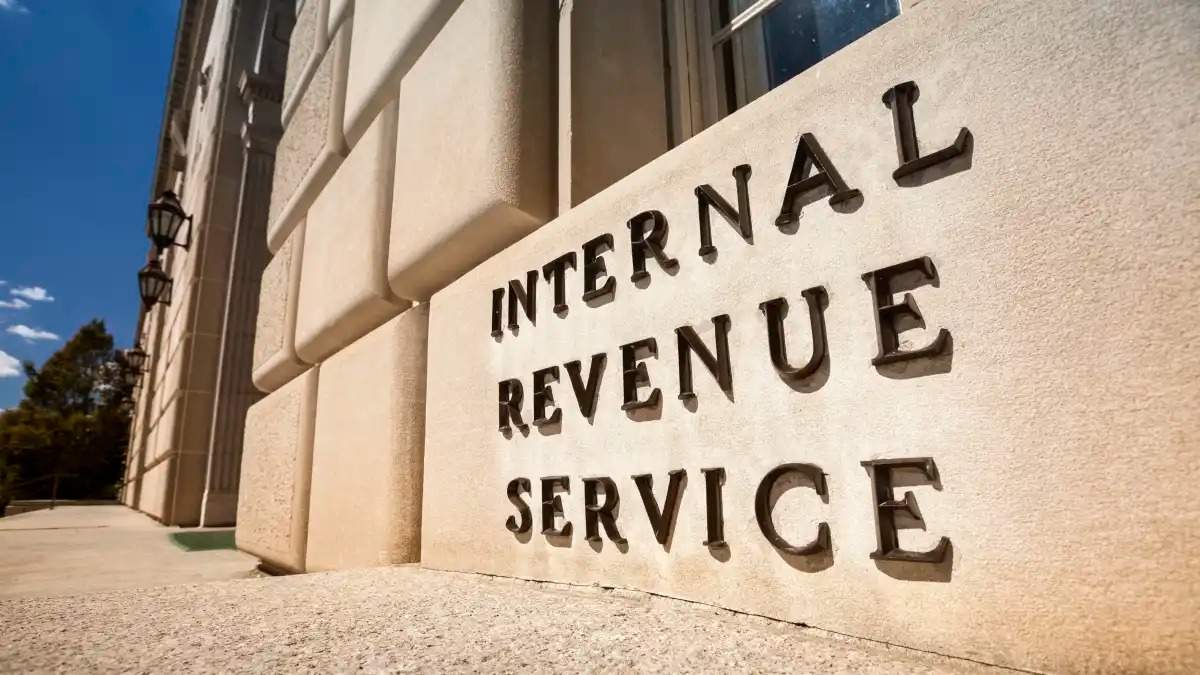

Finance
What Is A Letter Of Credit?
Modified: March 1, 2024
Learn more about letters of credit in the world of finance and how they can be beneficial for individuals and businesses alike.
(Many of the links in this article redirect to a specific reviewed product. Your purchase of these products through affiliate links helps to generate commission for LiveWell, at no extra cost. Learn more)
Table of Contents
- Introduction
- Definition of a Letter of Credit
- Purpose of a Letter of Credit
- Parties Involved in a Letter of Credit
- Types of Letters of Credit
- Process of a Letter of Credit
- Advantages of Using a Letter of Credit
- Disadvantages of Using a Letter of Credit
- Importance of a Letter of Credit in International Trade
- Common Terms and Conditions in a Letter of Credit
- Key Considerations for a Letter of Credit
- Conclusion
Introduction
A letter of credit is a financial instrument widely used in international trade transactions to provide a secure and reliable payment method for both the buyer and seller. It serves as a guarantee from a bank or financial institution to make payment to the beneficiary upon satisfying certain conditions specified in the letter of credit.
With the global nature of business transactions, buyers and sellers often find themselves in situations where trust and risk mitigation are crucial. In such circumstances, a letter of credit acts as a vital tool to facilitate smooth transactions and build confidence between parties involved in international trade.
This article will delve into the intricacies of a letter of credit, including its definition, purpose, parties involved, types, process, advantages, disadvantages, importance in international trade, common terms, and key considerations. Whether you are a business owner, entrepreneur, or simply curious about the world of finance and international trade, understanding the basics of a letter of credit is essential.
So, let’s dive into the world of letters of credit and explore how they play a significant role in the global economy.
Definition of a Letter of Credit
A letter of credit, also known as an LC or documentary credit, is a financial tool often used in international trade to ensure payment security between a buyer and a seller. It is a written document issued by a bank or financial institution on behalf of the buyer (importer) to guarantee payment to the seller (exporter) once specific conditions are met.
The letter of credit essentially acts as a promise of payment, providing reassurance to the seller that they will receive payment for the goods or services they have provided. It offers protection to both parties by minimizing the risk of non-payment or default.
The terms and conditions of a letter of credit are typically outlined in a formal written agreement, which includes details such as the amount, currency, expiry date, shipping terms, and required documents. These documents usually include invoices, bills of lading, inspection certificates, and other relevant paperwork.
Letters of credit can be both irrevocable and revocable, although the former is the most common and offers a higher level of assurance to the seller. Irrevocable letters of credit cannot be amended or canceled without the consent of all parties involved, providing a greater degree of security.
It is important to note that a letter of credit is separate from the underlying contract between the buyer and seller. It is a financial agreement between the buyer’s bank and the seller’s bank, providing a layer of protection and ensuring that the terms of the underlying contract are satisfied before payment is made.
Purpose of a Letter of Credit
The primary purpose of a letter of credit is to mitigate risks and provide assurance to both the buyer and seller in international trade transactions. It plays a crucial role in facilitating smooth and secure payments in global commerce. Let’s explore the key purposes of a letter of credit:
- Payment Security: One of the main purposes of a letter of credit is to provide payment security to the seller. The seller can have confidence in receiving payment for their goods or services, as long as they comply with the terms and conditions specified in the letter of credit. The involvement of a reputable bank as the issuer of the letter adds credibility and assurance.
- Risk Mitigation: For the buyer, a letter of credit helps mitigate the risk of non-performance by the seller. By specifying the conditions that must be met before payment is released, the buyer can ensure that the goods or services meet the agreed-upon standards or contractual obligations. It also reduces the risk of fraud or misrepresentation by the seller.
- Guaranteed Payment Terms: Letters of credit provide a clear framework for payment terms between the buyer and seller. The agreed-upon conditions must be met before the bank will release payment. This ensures that both parties are aware of the expectations and can plan and fulfill their obligations accordingly.
- International Trade Facilitation: In the complex world of international trade, letters of credit play a vital role in facilitating transactions between parties from different countries. They help bridge the gaps in legal, regulatory, and cultural differences by providing a universally accepted method of payment and documentation.
- Building Trust: By utilizing a letter of credit, buyers and sellers can establish trust and confidence in their business relationship. The involvement of a reputable financial institution as the issuer of the letter adds an extra layer of credibility and ensures that both parties are protected.
Overall, the purpose of a letter of credit is to create a secure, reliable, and well-defined payment mechanism that minimizes risk, builds trust, and facilitates smooth international trade transactions.
Parties Involved in a Letter of Credit
A letter of credit involves several parties, each playing a specific role in the transaction. Understanding the roles and responsibilities of these parties is crucial for a smooth and successful letter of credit process. Let’s take a closer look at the main parties involved:
- Importer/Buyer: The importer, also known as the buyer, is the individual or company that initiates the transaction and applies for the letter of credit. The buyer is responsible for providing the necessary documents and funds to the issuing bank to open the letter of credit.
- Exporter/Seller: The exporter, or seller, is the individual or company that sells the goods or services and is the beneficiary of the letter of credit. The seller must comply with the terms and conditions specified in the letter of credit to receive payment.
- Issuing Bank: The issuing bank is the financial institution that issues the letter of credit on behalf of the buyer. The issuing bank is responsible for verifying the buyer’s creditworthiness, issuing the letter of credit, and ensuring compliance with the agreed-upon terms and conditions.
- Advising Bank: The advising bank, also known as the notifying bank, is a bank located in the seller’s country that acts as an intermediary between the issuing bank and the seller. Their role is to inform the seller about the existence and details of the letter of credit.
- Confirming Bank: In some cases, the seller may request a confirming bank to add an extra level of assurance to the letter of credit. The confirming bank, usually located in the seller’s country, guarantees payment to the seller if the issuing bank fails to fulfill its obligations.
- Transportation and Insurance Companies: These parties are not directly involved in the letter of credit process but play a crucial role in ensuring the safe transportation and insurance coverage of the goods being traded. They provide necessary documentation such as bills of lading and insurance certificates as evidence of compliance with the letter of credit.
Each party involved has specific obligations and responsibilities in the letter of credit process. It is essential for all parties to communicate effectively and ensure compliance with the terms and conditions to ensure a successful international trade transaction.
Types of Letters of Credit
There are various types of letters of credit, each tailored to meet specific requirements and circumstances in international trade. Understanding the different types can help buyers and sellers choose the most appropriate option for their transactions. Here are some common types of letters of credit:
- Revocable Letter of Credit: A revocable letter of credit can be amended or canceled by the issuing bank without the consent of the beneficiary (seller). This type of letter of credit offers little security to the seller and is rarely used in international trade.
- Irrevocable Letter of Credit: An irrevocable letter of credit, on the other hand, cannot be amended or canceled without the consent of all parties involved. It provides a higher level of security to the seller and is commonly used in international trade, ensuring that payment is guaranteed upon satisfying the specified conditions.
- Confirmed Letter of Credit: A confirmed letter of credit involves the participation of a confirming bank, in addition to the issuing bank. The confirming bank provides a guarantee of payment to the seller, usually in the seller’s country, even if the issuing bank fails to fulfill its obligations. This type of letter of credit adds an extra layer of security for the seller.
- Unconfirmed Letter of Credit: An unconfirmed letter of credit is only backed by the issuing bank and does not involve the participation of a confirming bank. In this case, the seller relies solely on the creditworthiness of the issuing bank for payment.
- Transferable Letter of Credit: A transferable letter of credit allows the primary beneficiary (first seller) to transfer all or part of the credit to a second beneficiary (second seller). This type of letter of credit is commonly used in complex export and import transactions that involve intermediaries.
- Back-to-Back Letter of Credit: A back-to-back letter of credit involves two separate letters of credit. The first letter of credit is issued by the buyer’s bank in favor of an intermediary, who then issues a second letter of credit in favor of the actual seller. This type of letter of credit is used when the intermediary is acting as a middleman in the transaction.
It is important to carefully consider the specific requirements of each transaction and consult with financial advisors or experts to determine the most suitable type of letter of credit for your international trade needs.
Process of a Letter of Credit
The process of a letter of credit involves several steps to ensure a smooth and secure international trade transaction. While the exact process may vary depending on the specific terms and conditions of the letter of credit, here is a general overview of the key steps involved:
- Agreement between Buyer and Seller: The buyer and seller negotiate and agree on the terms of the transaction, including the goods or services, price, delivery terms, and other relevant details.
- Application for the Letter of Credit: The buyer applies to their bank, known as the issuing bank, to open a letter of credit in favor of the seller. The application includes details such as the amount, currency, expiry date, required documents, and any specific conditions to be met.
- Issuance of the Letter of Credit: Upon reviewing the buyer’s application, the issuing bank issues the letter of credit in favor of the seller, guaranteeing payment upon meeting the specified terms and conditions.
- Notification to the Seller: The issuing bank sends the letter of credit to an advising bank, also known as the notifying bank, located in the seller’s country. The advising bank then notifies the seller about the existence and details of the letter of credit.
- Compliance with Conditions: The seller reviews the terms and conditions of the letter of credit and ensures that they can fulfill the requirements within the specified timeframe. They may need to provide documents such as invoices, bills of lading, inspection certificates, and insurance documents.
- Shipment and Documents: Once the goods are ready for shipment, the seller arranges for transportation and provides the necessary documents as specified in the letter of credit. These documents serve as proof of compliance and facilitate the release of payment.
- Presentation of Documents: The seller presents the documents to the advising or confirming bank, along with any required transportation and insurance documents. The bank verifies the compliance of the documents with the letter of credit’s terms and conditions.
- Payment and Settlement: If the documents comply with the requirements, the advising or confirming bank forwards them to the issuing bank. The issuing bank then reviews the documents and makes payment to the seller, as per the agreed-upon terms.
- Transfer of Funds and Delivery of Goods: The issuing bank transfers the funds to the seller’s bank account, and the seller releases the goods to the buyer. The transaction is considered complete, and the buyer takes ownership of the goods.
- Closure of the Letter of Credit: Once the transaction is complete, the letter of credit is closed, and all obligations are fulfilled by the parties involved.
The process of a letter of credit requires careful adherence to the specified terms and conditions, effective communication between the parties, and prompt handling of documents to ensure a successful international trade transaction.
Advantages of Using a Letter of Credit
Utilizing a letter of credit offers several advantages for both buyers and sellers involved in international trade transactions. These advantages contribute to a secure and efficient trade process. Here are some key benefits of using a letter of credit:
- Payment Security: A letter of credit provides payment security to the seller, ensuring that they will receive payment as long as they comply with the terms and conditions specified in the letter of credit. This reduces the risk of non-payment or default.
- Risk Mitigation: For the buyer, a letter of credit mitigates the risk of non-performance or fraud by ensuring that the seller must fulfill specific conditions before receiving payment. This reduces the buyer’s exposure to potential financial loss.
- Facilitates Trade: Letters of credit facilitate international trade by offering a universally accepted payment method. It helps bridge the gaps in legal, regulatory, and cultural differences between the buyer and seller, creating a more efficient trade process.
- Builds Trust: The involvement of a reputable bank as the issuer of the letter of credit builds trust between the buyer and seller. It demonstrates the commitment of the buyer to fulfill their payment obligations and provides reassurance to the seller about receiving payment.
- Clear Payment Terms: With a letter of credit, the payment terms are clearly outlined in the agreement. Both parties know and understand the conditions that must be met before payment can be released. This helps avoid misunderstandings and disputes related to payment.
- Regulatory Compliance: Letters of credit often require compliance with international trade regulations and standards. This ensures that the trade transaction aligns with legal and regulatory requirements, reducing the risk of non-compliance for both the buyer and seller.
- Flexible Financing Options: Letters of credit can provide access to financing options for the buyer through the issuing bank or other financial institutions. This can be particularly beneficial for small or new businesses that may face challenges with securing traditional financing.
- Global Acceptance: Letters of credit are universally accepted in international trade, providing a widely recognized and trusted form of payment. This makes it easier to conduct business with parties from different countries and ensures a smoother transaction process.
By leveraging the advantages of using a letter of credit, buyers and sellers can mitigate risks, ensure payment security, and establish a strong foundation of trust in their international trade transactions.
Disadvantages of Using a Letter of Credit
While using a letter of credit offers many benefits, there are also some disadvantages to consider. Understanding the potential drawbacks can help buyers and sellers make informed decisions when utilizing this financial instrument in international trade. Here are some key disadvantages of using a letter of credit:
- Complex Documentation: The process of preparing and presenting the required documents for a letter of credit can be complex and time-consuming. Buyers and sellers must ensure that all documents are accurate, comply with the letter of credit’s terms, and meet the specified deadlines.
- Costs and Fees: Opening and managing a letter of credit can come with various costs and fees, including issuing fees, advising fees, confirmation fees, and amendment fees. These additional expenses can increase the overall transaction costs for both parties.
- Potential for Discrepancies: The strict examination of documents by banks can lead to discrepancies and document rejections. Even minor errors or inconsistencies in the required paperwork can result in delays or even the rejection of the documents, causing disruptions and additional costs.
- Inflexibility: The terms and conditions specified in the letter of credit may sometimes be inflexible, making it challenging for the buyer or the seller to adapt to changing circumstances or unforeseen challenges during the transaction process.
- Dependency on Banks: The use of a letter of credit heavily relies on the involvement of banks and financial institutions. Any delays or errors in their processes can lead to payment delays or disputes, impacting the smooth flow of the transaction.
- Potential for Fraud: While letters of credit are designed to reduce the risk of fraud, there is still a possibility for fraudulent activities, such as forged documents or false shipping information. Buyers and sellers must exercise caution and perform due diligence to minimize the risk of fraud.
- Time-Consuming Process: The entire process of a letter of credit, from its application to the release of payment, can be time-consuming. Banks and other parties involved may require extensive verification and documentation processes, resulting in delays in payment and delivery.
- Limited Control over Funds: Sellers may have limited control over the funds until the documents are presented and verified. They must wait for the banks’ approval and release of the payment, which may affect their cash flow and financial planning.
Despite these disadvantages, letters of credit remain a widely used and trusted method of trade finance, particularly in international transactions where security and risk mitigation are paramount. Understanding and addressing these potential drawbacks can help mitigate their impact and ensure a successful letter of credit arrangement.
Importance of a Letter of Credit in International Trade
A letter of credit plays a critical role in international trade by providing a secure and reliable payment method for buyers and sellers across different countries. Its importance stems from the challenges and risks involved in cross-border transactions. Here are some key reasons why letters of credit are essential in international trade:
- Risk Mitigation: International trade involves various risks, including non-payment, non-delivery, political instability, and different legal systems. A letter of credit mitigates these risks by providing a secure payment mechanism and ensuring compliance with agreed-upon terms and conditions.
- Payment Security: It provides a guarantee of payment to sellers, giving them confidence that they will receive payment for their goods or services. Buyers, on the other hand, have assurance that payment will only be made if the seller meets the specified conditions.
- Global Acceptance: Letters of credit are widely accepted in international trade, making them a trusted and recognized form of payment. This acceptance facilitates transactions between parties from different countries and eliminates concerns about currency conversion and payment methods.
- Facilitation of Financing: Letters of credit can be used to secure financing from banks and financial institutions, allowing buyers to access funds for purchases. This option is especially beneficial for buyers who may face challenges in securing traditional forms of financing.
- Legal and Regulatory Compliance: Letters of credit help ensure compliance with legal and regulatory requirements in international transactions. They provide a framework for the proper documentation, verification, and compliance necessary for cross-border trade.
- Trust and Confidence Building: Utilizing a letter of credit helps establish trust and confidence between buyers and sellers who may not have prior business relationships. The involvement of reputable banks as third-party guarantors adds credibility and reassurance to both parties.
- Smooth Trade Operations: Letters of credit streamline trade operations by standardizing payment terms, required documentation, and compliance procedures. This standardization minimizes disputes, delays, and uncertainties, leading to smoother and more efficient transactions.
- Reduced Currency and Payment Risks: With letters of credit, currency risks are managed by using a specified currency for payment. This reduces exposure to fluctuations in exchange rates. Additionally, payment risks are minimized since the bank issuing the letter of credit guarantees payment to the seller.
Given the complex nature of international trade, letters of credit are instrumental in ensuring secure and prosperous transactions. By providing payment security, mitigating risks, and fostering trust, letters of credit facilitate smooth trade operations and enable global commerce to thrive.
Common Terms and Conditions in a Letter of Credit
A letter of credit operates based on specific terms and conditions that outline the responsibilities and obligations of the parties involved. These terms and conditions ensure that the transaction proceeds smoothly and that payment is made when the agreed-upon conditions are met. While the terms and conditions can vary depending on the specific agreement, certain provisions are commonly found in most letters of credit. Here are some common terms and conditions:
- Description of Goods or Services: The letter of credit should include a detailed description of the goods or services being traded. This includes specifications, quantities, quality requirements, and any other relevant information to ensure both parties have a clear understanding of what is being transacted.
- Price and Currency: The letter of credit specifies the price of the goods or services and the currency in which payment is made. It ensures clarity and guarantees that the parties are in agreement on the pricing terms.
- Expiration Date: Letters of credit have an expiration date, beyond which the credit is no longer valid. It is essential for parties to comply with the terms and complete the transaction before the letter of credit expires.
- Documents Required: The letter of credit specifies the documents that the seller must present to the bank to receive payment. These documents typically include invoices, bills of lading, certificates of origin, inspection certificates, and insurance documents, among others.
- Compliance with Relevant Standards: The letter of credit may require the goods or services to comply with specific industry or regulatory standards. Complying with these standards ensures that the buyer receives products of the expected quality and meets any legal or industry-specific requirements.
- Transportation and Insurance: The letter of credit may specify the terms of transportation, such as the mode of transport, the shipping company to be used, and the required insurance coverage. These provisions ensure that the goods are properly transported and insured during transit.
- Inspection and Acceptance: The letter of credit may outline the inspection and acceptance requirements, which authenticate that the goods meet the agreed-upon specifications. It may specify the process and timeline for inspection, as well as any applicable penalties for non-compliance.
- Discrepancy Handling: The letter of credit should include guidelines on how discrepancies in presented documents will be handled. It may detail the time frame within which the bank must notify the beneficiary of any discrepancies and the actions the beneficiary must take to rectify the discrepancies.
- Bank Charges and Fees: The letter of credit may specify the allocation of bank charges and fees, indicating which party is responsible for paying certain charges, such as issuing fees, advising fees, or confirmation fees.
- Applicable Law and Jurisdiction: The letter of credit may include a provision specifying the governing law and jurisdiction that will apply in the event of disputes or legal issues arising from the transaction.
It is crucial for both the buyer and seller to carefully review and understand the terms and conditions specified in the letter of credit to ensure compliance and minimize the risk of disputes or payment delays.
Key Considerations for a Letter of Credit
When entering into a letter of credit arrangement, there are several important factors to consider to ensure a successful and efficient transaction. These key considerations help buyers and sellers navigate the complexities of international trade and maximize the benefits of using a letter of credit. Here are some factors to keep in mind:
- Choose the Right Type of Letter of Credit: Understand the different types of letters of credit available and select the most suitable type for your specific trade transaction. Consider factors such as risk tolerance, the credibility of the issuing bank, and the involvement of confirming banks.
- Thoroughly Review the Terms and Conditions: Carefully examine and understand all the terms and conditions of the letter of credit before proceeding with the transaction. Make sure you are clear on the obligations, requirements, and deadlines specified in the document.
- Ensure Compliance with Documentation Requirements: Be diligent in preparing and providing the necessary documents in accordance with the letter of credit’s requirements. Ensure that all documents are complete, accurate, and compliant with the specified regulations and standards.
- Select Reputable Banks and Advising/Confirming Institutions: Choose well-established and reputable banks to issue and advise/confirm the letter of credit. Their credibility and expertise will provide assurance and smooth handling of the transaction.
- Understand the Costs and Fees Involved: Familiarize yourself with the associated costs and fees of the letter of credit, including issuing fees, advising fees, confirmation fees, and amendment fees. Consider these expenses when assessing the overall feasibility and profitability of the transaction.
- Communicate Effectively with all Parties: Maintain open and effective communication with all parties involved, including the buyer, seller, banks, and any intermediaries. Clear and timely communication ensures smooth coordination, resolves any issues promptly, and avoids delays or misunderstandings.
- Adhere to Timelines: Strictly follow the deadlines specified in the letter of credit, whether it is related to document submission, shipment, or other requirements. Failure to meet these deadlines can result in delays, document rejections, or even non-payment.
- Consider Currency and Exchange Rate Risks: Assess and manage potential currency and exchange rate risks when dealing with international transactions. Understand the currency specified in the letter of credit and consider hedging options if needed.
- Seek Professional Advice: When in doubt, consult with trade finance experts or legal professionals specializing in international trade. Their expertise and guidance can help you navigate the complexities of the letter of credit process and ensure compliance with legal and regulatory requirements.
- Maintain Records and Documentation: Keep accurate records of all correspondence, documents, and transactions related to the letter of credit. These records serve as a valuable reference and can be crucial in resolving any disputes or issues that may arise.
By carefully considering these factors, you can enhance your letter of credit experience, minimize risks, and maximize the benefits of using this widely accepted and trusted financial instrument in international trade.
Conclusion
In conclusion, a letter of credit plays a vital role in international trade, providing a secure and reliable payment method for buyers and sellers across different countries. It offers numerous advantages, including payment security, risk mitigation, trust-building, and facilitation of global trade operations.
Despite some disadvantages, such as complexity, costs, and potential for discrepancies, the benefits of using a letter of credit outweigh the challenges. It ensures compliance with legal and regulatory requirements, reduces payment risks, and fosters smoother trade transactions.
Considerations such as selecting the right type of letter of credit, reviewing terms and conditions, complying with documentation requirements, and maintaining effective communication among all parties are crucial for a successful letter of credit transaction.
Whether you are a buyer or seller involved in international trade, understanding the intricacies of a letter of credit and seeking professional advice when needed can help you utilize this financial instrument to its full potential.
With globalization continuing to drive international trade, letters of credit remain a cornerstone of secure and efficient transactions. By embracing the benefits and navigating the considerations involved, businesses can engage in cross-border trade with confidence and expand their global reach.














